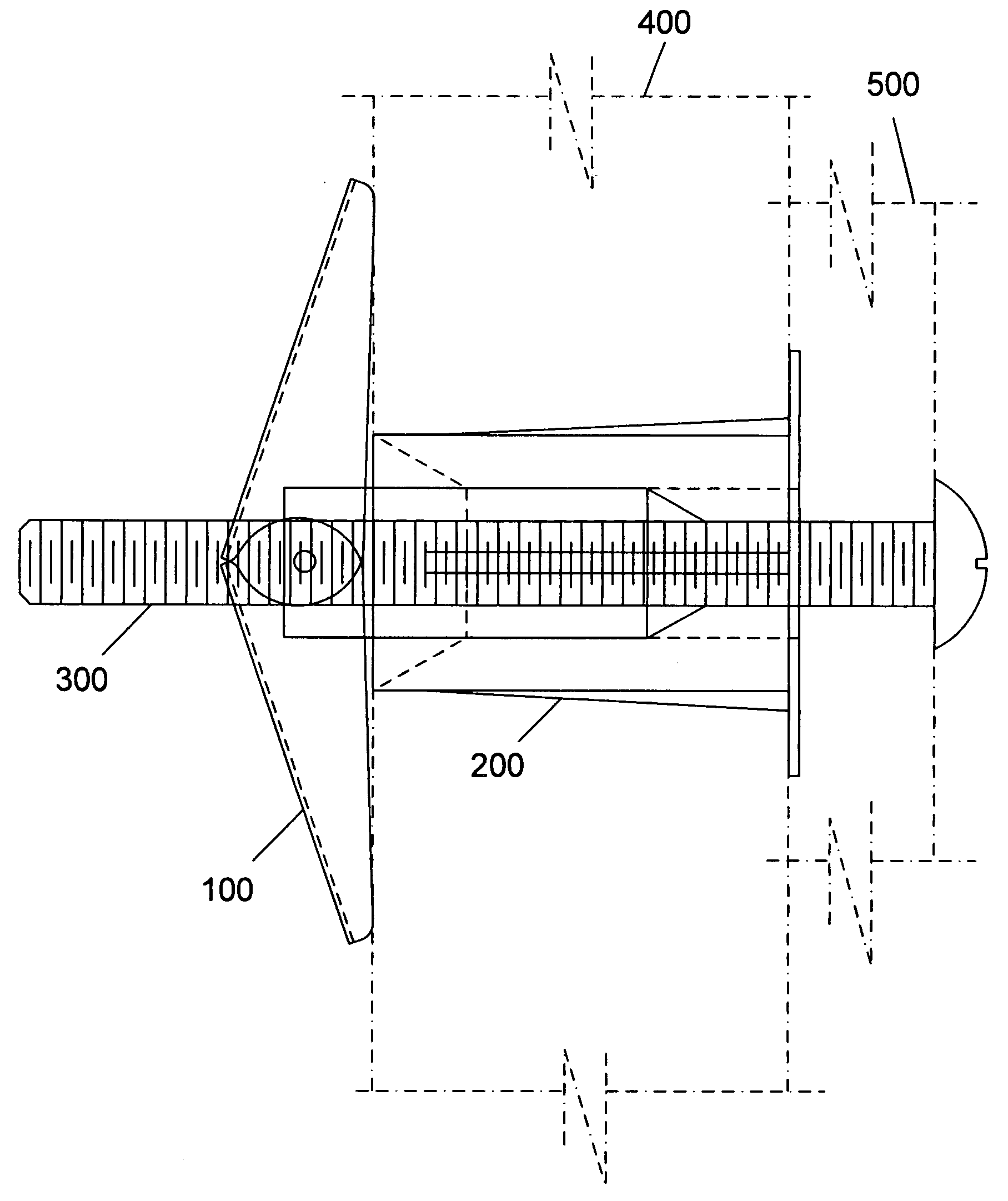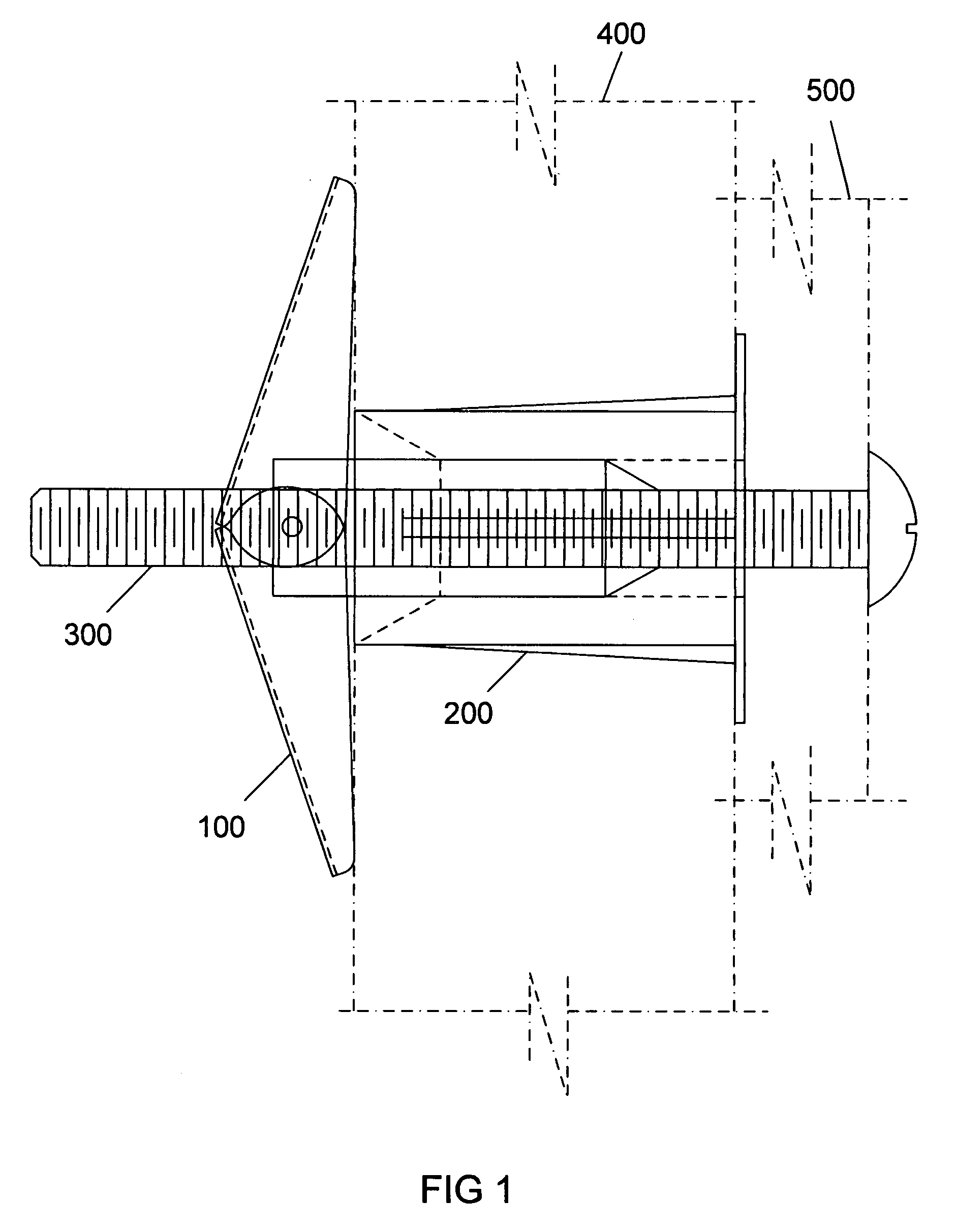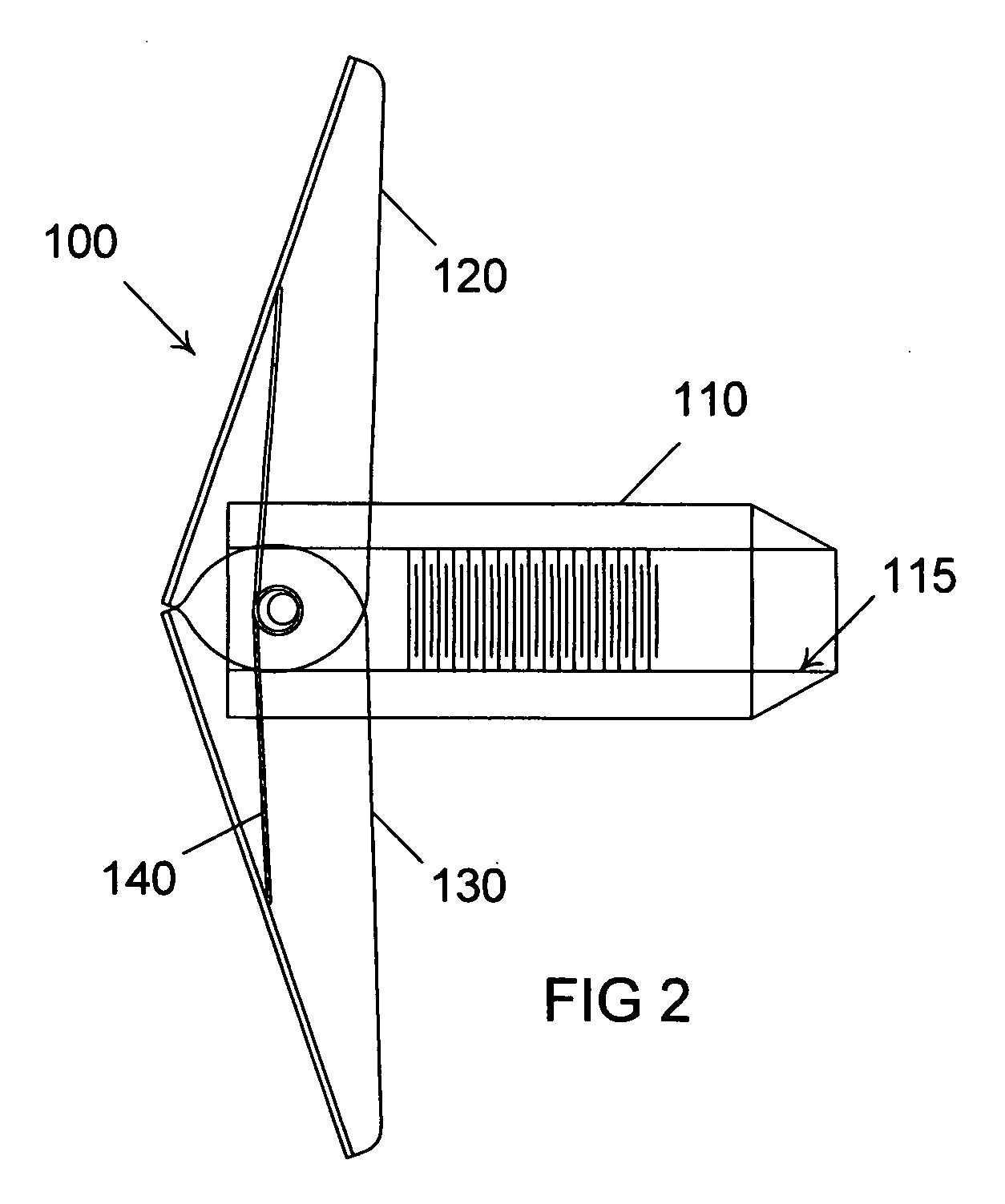Toggle bolt assembly
a technology of toggle bolts and bolt assemblies, which is applied in the direction of fastening means, snap-action fasteners, dowels, etc., can solve the problems of difficulty in sequence, machine screw and mating nut pre-assembling, and weak design of prior art toggle bolts
- Summary
- Abstract
- Description
- Claims
- Application Information
AI Technical Summary
Benefits of technology
Problems solved by technology
Method used
Image
Examples
embodiment
Preferred Embodiment
[0041]The preferred embodiment of the present invention is illustrated in FIGS. 1 through 9. As illustrated in FIG. 1, the present invention is composed of three separate elements: a toggle nut 100, a collar 200, and a screw 300.
[0042]The toggle nut 100 is illustrated in FIGS. 2, 3 and 4. It is composed of a cylindrical sleeve 110, a first wing member 120, a second wing member 130, and a spring 140. As illustrated in FIG. 4, the cylindrical sleeve 110 has a substantially round outer surface 111 with a plurality of regularly spaced saw tooth shaped grooves 112. As illustrated in FIGS. 3 and 4, the outer surface 111 also includes two pins 113 diametrically opposed to each other and located near an end 114 of the sleeve 110. An inner surface 115 of the sleeve 110 has internal threads 116.
[0043]As illustrated in FIGS. 3 and 4, the first wing member 120 is of a substantially tapered channel cross section, with a first flange 121, a second flange 122, a web 123, a firs...
PUM
 Login to View More
Login to View More Abstract
Description
Claims
Application Information
 Login to View More
Login to View More - R&D
- Intellectual Property
- Life Sciences
- Materials
- Tech Scout
- Unparalleled Data Quality
- Higher Quality Content
- 60% Fewer Hallucinations
Browse by: Latest US Patents, China's latest patents, Technical Efficacy Thesaurus, Application Domain, Technology Topic, Popular Technical Reports.
© 2025 PatSnap. All rights reserved.Legal|Privacy policy|Modern Slavery Act Transparency Statement|Sitemap|About US| Contact US: help@patsnap.com



